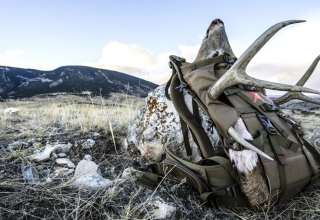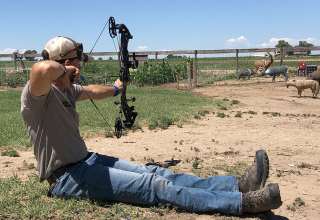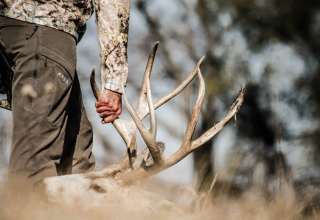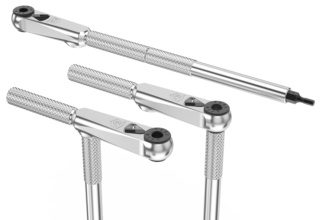Hunting bull elk after the rut is no easy task. Here’s how to notch your tag before the season ends.
by the Shoot-On Staff
If you still have a bull elk tag to fill for the year, the clock is ticking. You need to locate a bull—and fast. But how? The rut is long over, and the bulls aren’t talking. They’ve been under high hunting pressure for a few months and all signs of the ungulates have disappeared.
Don’t be discouraged. This is an ideal time to hit the woods and hunt one of the icons of the West. Here are a few tips for locating hard to find bulls this December.
Food and Water
With the rut over, bulls will have abandoned their cows and gone back to small bachelor herds with other bull elk. They typically will travel back to the same dense canyons they spend most of the year in with a focus on three things: feeding, sleeping, and recovering. Remember, they’ve just gotten done chasing cows and fighting other bulls for weeks during the rut. They’re exhausted and need to rebuild their fat stores to get them through the harsh winter.
So, where’s the best place for bulls to feed and sleep? In the deepest, nastiest terrain you can find.
Glassing Game
Since bulls have gone quiet after the rut, your best opportunity to locate bulls is to hike to a high vantage point and spend hours behind the glass. Get to a spot long before the sun comes up. In the early mornings, you may find bulls on south facing slopes feeding in the open. But as the sun rises, you’ll see them quickly move to north facing slopes, deep into the thick timber.
Why the timber? A few reasons: it’s dark and cool and they’re more likely to be safe from predators and hunters in the timber because they’re easily concealable. The forest provides ample territory to bed and rest all day before eventually beginning to graze again around dusk.
As the sun starts to fall, make sure you’re glassing the north facing slopes, picking apart the trees and looking for the slightest movement.
Fon’t be surprised, though, if you’re glassing a canyon and see bulls laying in the snow in the wide-open. Bulls will go to areas that they feel are safe. This very well could be a deep canyon, far off the beaten path.
Pro tip: mount your binoculars on a tripod and plan to settle in for hours of glassing. The tripod will help you to glass longer as it provides a steady mount instead of resting your elbows on your knees. Your eyes will thank you.
Will the Snow Push Them Down?
A common misconception around late-season elk hunting is that snow fall at high elevations will push bulls down the mountain. In a sense this is true, however, it’s not because of the cold, like some think. The cold does not affect elk in the least.
They only reason the snow may push bulls is when it gets so deep that they can no longer reach the food underneath of it. When this is the case, elk will move downhill to feed where the snow isn’t as dense. Don’t overlook snow covered slopes—the elk may still be there.
Plus, snow can be your best friend when hunting late season. It gives you the opportunity to track animals and determine if they are in the area or are long gone. Look for fresh tracks and scat. Are the tracks frozen at the bottom or still wet? Is the scat still warm or frozen solid? If the sign is fresh, get high quickly and start glassing. There are bulls in there.
Get Your Miles In
Bulls have now been joined in the woods by hunters since August—they’re feeling the pressure. This means that you’re not going to find your bull anywhere close to roads or trails. Get your hiking boots on.
You’re going to need to go far off the beaten path to locate bachelor herds. The more roadless the area, the more bulls there will be. Check topo maps for water sources and grazing areas that are closely surrounded by timber. Look for canyons, blowdowns, drainages, and ridgelines.
Your best plan of action is to glass up a bull rather than still hiking through the thick timber. Remember, a bull’s key defense mechanism is his sense of smell. One slight change in wind while still hunting the timber could bust a bull bedded down 300 yards away. You would never even know he had been there.
- FIREARM BREAKTHROUGH! Avient Composite Heat Release Technology - June 16, 2025
- Moultrie Edge 2 Pro Review - June 13, 2025
- Real Avid Introduces the X3 Driver™ System - May 20, 2025




















